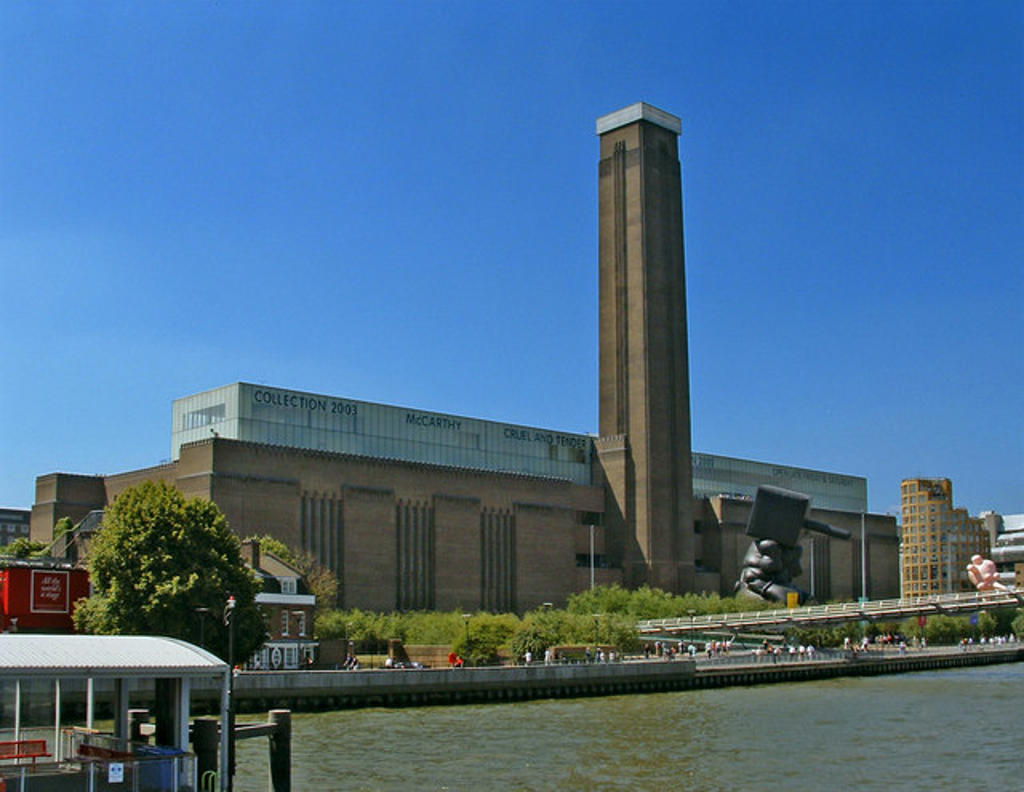About Tate Modern
The vast industrial architecture of the Tate Modern, housed in the former Bankside Power Station, immediately commands attention. Its towering chimney, a remnant of its past, rises prominently against the London skyline, while the expansive Turbine Hall stretches out, inviting exploration. This iconic building, with its raw, utilitarian design, has been transformed into a vibrant space for contemporary art, where the old meets the new in a seamless blend of history and modernity.
Opened in 2000, the Tate Modern has become a symbol of cultural regeneration, breathing new life into the South Bank of the Thames. The building itself, designed by Herzog & de Meuron, retains much of its original character, with exposed brickwork and steel structures that speak to its industrial heritage. This juxtaposition of past and present is mirrored in the art it houses, with works from the likes of Picasso, Warhol, and Hockney displayed alongside cutting-edge installations and performances.
Center Stage: The Turbine Hall
The Turbine Hall, once the heart of the power station, now serves as a dynamic space for large-scale installations. Its vastness is both awe-inspiring and inviting, providing artists with a unique canvas to create immersive experiences. Each year, the hall hosts a new commission, transforming the space and challenging visitors to engage with art in innovative ways. The sheer scale of the hall, with its towering ceilings and expansive floor, allows for a level of creativity and experimentation that is unparalleled in the art world.
Plan your perfect trip to London with Travo! Download now and start exploring.
Artistic Touches: The Collections
The Tate Modern's collections span a wide range of styles and movements, from early 20th-century modernism to contemporary works. The galleries are organized thematically, encouraging visitors to explore connections between different artists and periods. Notable pieces include Salvador Dalí’s "Autumnal Cannibalism," Mark Rothko’s "Seagram Murals," and Louise Bourgeois’ "Maman," a giant spider sculpture that looms over the entrance. These works, among many others, invite reflection on the evolution of art and its role in society.
Cultural Heartbeat: The South Bank
The Tate Modern is more than just a museum; it is a cultural hub that plays a vital role in the vibrant South Bank community. Its location, along the Thames, offers stunning views of the river and the city beyond, while its proximity to other cultural landmarks, such as the Globe Theatre and the Millennium Bridge, makes it a focal point for visitors and locals alike. The museum hosts a variety of events, from film screenings to artist talks, fostering a lively dialogue between art and the public.
Creative Vision: Architectural Transformation
The transformation of the Bankside Power Station into the Tate Modern is a testament to the power of architectural innovation. Herzog & de Meuron’s design preserves the building’s industrial past while creating a space that is open, accessible, and forward-looking. The addition of the Blavatnik Building in 2016 expanded the museum’s capacity, providing new galleries and a panoramic viewing terrace. This blend of old and new architecture reflects the museum’s mission to celebrate both the history and future of art.
Living Culture: Ongoing Impact
Since its opening, the Tate Modern has had a profound impact on the art world and the city of London. It has redefined the role of museums, emphasizing accessibility and engagement, and has become one of the most visited art museums in the world. Its commitment to showcasing diverse voices and perspectives ensures that it remains a dynamic and relevant institution. For visitors, the Tate Modern offers not just a glimpse into the world of contemporary art, but an invitation to be part of an ongoing cultural conversation.

Map loading...
Location
Bankside, SE1 9TG, London
